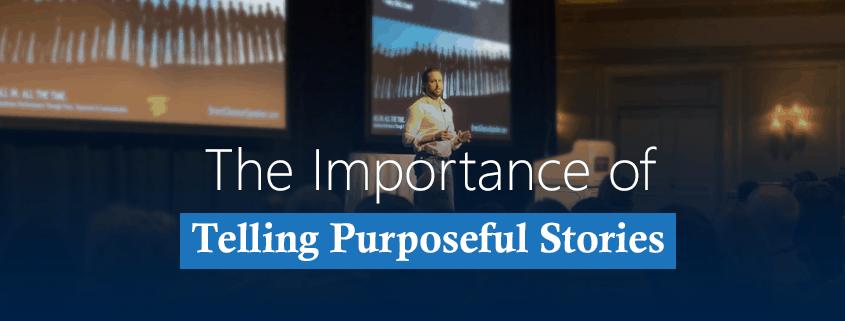The Importance of Telling Purposeful Stories
Purposeful stories matter because they help make a connection. Good storytelling requires both context and feeling. One without the other doesn’t make much of an impact. Why? Data helps us to create a foundation for our actions but people respond best to emotional factors. People identify with what they see or hear. Stories are a necessary part of the Culture Driven Transformation (CDT) model and there are many ways you can use them purposefully.
Build Morale and Employee Engagement
During a culture shift, it’s important to focus on the achievements won along the way. While the metrics matter, the stories are the focus. How was the goal achieved? Who was involved? What can be learned from the accomplishment? Answers to these questions can motivate a team to reach even greater success and inspire more employee engagement. In some companies, they’re called case studies; in others, team wins. Regardless of the title, building morale all comes down to telling the right story.
Teach a Lesson and Keep Moving Forward
Conversely, telling a story can teach a lesson when a project is behind or when a mission has failed. Failure is something everyone has experienced on some level at some point in life. Sharing failure anecdotes are sometimes just as important as talking about successes. It’s not only about acknowledging mistakes but what happens to move forward from them and avoid repeating bad patterns.
Control the Narrative and Limit Gossip
Pieces of information floating around an organization leads to gossip, the ultimate culture killer. It doesn’t matter if the information is positive or negative, once it makes its way through the game of telephone, damage control is often necessary. Sharing a story or the “why” of information can help leaders control the narrative they want their teams to hear. Change, while positive, can make people uneasy if they aren’t sure what it entails. Be direct and transparent. By doing so, it limits individual interpretation and assumptions.
Stories Are Impactful
Stories are how we learn from our past mistakes. They’re what help us to connect with others, whether that’s our clients or our fellow teammates. Without them, data falls flat. We are left with details to piece together ourselves without any emotional component to inspire, teach, or guide. A strong culture requires meaningful communication which is often best provided through purposeful stories.
Streamlined processes and buttoned-up structure as part of the CDT model doesn’t mean you’re headed for a team of robots; quite the opposite. It allows you to free up time and resources to plan for bigger strategies, initiatives, and progress for your company. If you’re not sure where to begin, make a list of priorities for the month or quarter. For every main goal listed, map it to a story. This can be a personal anecdote, team shoutout, a fully-fledged case study, or an after action report.
Decide which method of storytelling is appropriate for the message you want to convey and the response you want to receive. Continue the process as you work toward change in your company. The more people become accustomed to hearing the who, what, when, and how, the more they will likely become engaged with what you have to say and the vision you have set forth.



Leave a Reply
Want to join the discussion?Feel free to contribute!